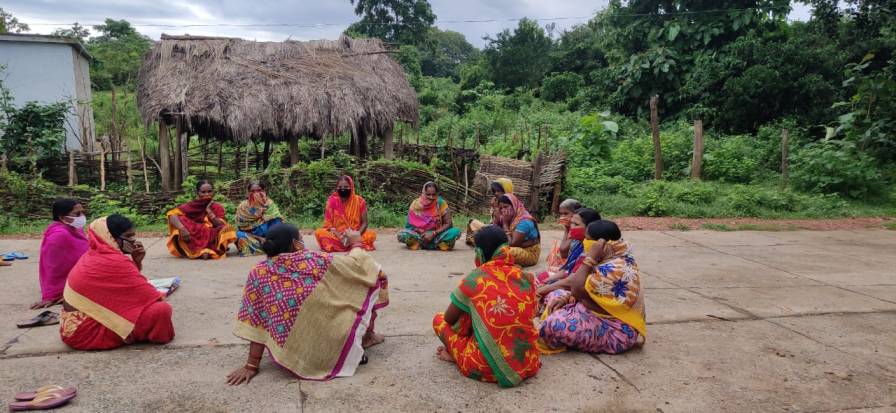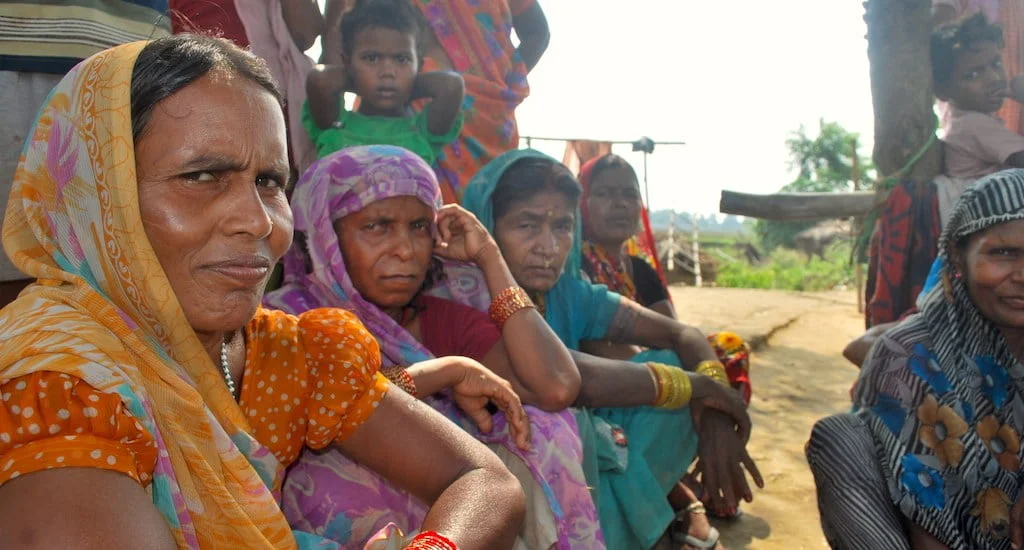Posted by Kaliat Ammu Sanyal
Often, during extreme public health emergencies, such as pandemics, mental health concerns are deprioritised. The limited resources that are available are directed towards prevention, containment, and treatment of the disease. Like previous pandemics, COVID-19 has also precipitated a rise in mental health concerns world over, which have received only limited attention. The mental health crisis gradually unfolding in India’s hinterland during the pandemic has received little to no attention in the media or in public discourse.
Lessons from past pandemics demonstrate that mental health concerns are further exacerbated in low- and middle-income countries (LMIC), where poor socio-economic determinants add to the stress already exerted by the public health crisis. Pandemic-induced precautions to halt the spread of the virus, such as lockdown measures, have had devastating effects on the poor, and economic stress and uncertainty are debilitating for their mental and physical health. Research has shown that poor households, especially those in rural areas, bear an unequal burden of disease outbreaks. Most rural communities do not have access to adequate health infrastructure. And in case of a full-blown disaster, the limited care that they do receive is disrupted, aggravating existing disparities in receiving physical and mental healthcare.
Disproportionate impact on women’s well-being
Experiences from past disease outbreaks globally demonstrate the need for a gendered analysis of health emergencies. Gender disparities leave women and their health needs at the margins during health emergencies. The Ebola virus outbreak in West Africa in 2014–16, for example, established the gendered impacts of a pandemic. Women were more likely to be infected by the virus due to their roles as caregivers and frontline workers. Additionally, women had lower decision-making power around the outbreak and their needs, therefore, were largely unmet.
COVID-19 has also created vulnerabilities for women and their health needs, aggravating already existing inequalities. These include gender-based roles, economic insecurity, food insecurity, gender-based violence, household and work pressure, and unequal access to healthcare. These issues have had significant repercussions on the physical and mental health of women. A study on urban informal workers in India, echo these findings. Overall, the study found very high levels of mental stress among the workers, predominantly due to economic and health concerns. It also found that women experienced greater mental stress, possibly explained by the additional social pressures they face when all family members are at home.
Experiences from past disease outbreaks globally demonstrate the need for a gendered analysis of health emergencies.
The first nationwide lockdown in India between March and May 2020 had a devastating effect on millions of people, their livelihoods, and their income-generating activities. Given the scale of the crisis, it became vital to empirically understand the impact of the pandemic and the lockdown on rural communities, especially on already disadvantaged groups, including women and girls.
Studies in India have shown that major concerns for rural populations included food insecurity and loss of income and livelihood during the course of the pandemic. The impact has been especially severe during state-enforced lockdowns. Additionally, the stress on women has been exacerbated as lockdowns have had a significant impact on women’s work within and outside the household. Primary work conducted by the Initiative for What Works to Advance Women and Girls in the Economy (IWWAGE) at Leveraging Evidence for Access and Development (LEAD), and IWWAGE partners, shows that over 50 percent of women in rural households have reported an increase in their household work, especially during lockdowns. Primary studies conducted in Odisha and Chhattisgarh also showed that women reported being more stressed during the pandemic, and showed spikes in depressive symptoms during lockdowns.
Also read: How Crises Affect The Mental Health Of Different Communities Differently
Food insecurity and limited nutritional intake, which have a strong correlation with physical and mental well-being, rose sharply. In Odisha, 83.5 percent of the women reported they were unable to access more food, while 78 percent reported that this was a major cause for their stress. This was worse for those living in extreme poverty. Households also witnessed a sharp decline in income, particularly among those that relied on migrant remittances. In Odisha, approximately 43 percent of women reported they were making only subsistence-level income, and any further shock such as medical expenses would plunge them into debt.
Empirical evidence demonstrates that rural communities were severely impacted as the pandemic unfolded in 2020 and continues to do so in 2021.
The strong link between poverty and mental health
Pandemics are indiscriminate; however, they do not attack at random. COVID-19 has shown much higher mortality among the old and the poor. The economic fallout of the pandemic has also not been equally felt. The economic effects of the pandemic are likely to be experienced for many years to come, disproportionately affecting families and communities that are already suffering acutely, and consequently increasing health inequalities.
COVID-19—the disease itself—will lead to significant mental health concerns for those who have been infected and have had to isolate, those who have had to strictly quarantine, who have lost family and friends, healthcare workers, frontline workers, and doctors. However, the extent of the mental health crisis will not be limited to the people directly impacted by the disease.
What remains understudied though are the mental health impacts of the pandemic on women, and in the case of India, poor, rural women.
Even before the world was exposed to COVID-19, multiple studies acknowledged the complex relationship between poverty and mental health. For a large number of people, the world was already an unequal and unfair place. The current pandemic has widened these pre-existing inequalities. While necessary, the multiple lockdowns have debilitated daily wage labourers, informal workers, migrant labour, and small and medium farmers and enterprises, further marginalising already vulnerable peoples. In LMICs, depression was already a leading cause of disability, in many cases strongly linked to poverty. Established research also shows that financial stress, constant exposure to violence, food insecurity, and inadequate access to social safety nets, all increase the potential of developing mental health conditions. Moreover, those with pre-existing mental health conditions are far less resilient to economic shocks, trapping individuals in cycles of poor mental health and poverty.
What remains understudied though are the mental health impacts of the pandemic on women, and in the case of India, poor, rural women. Financial stress, food insecurity, exposure to violence which increased during lockdowns, and lack of safety nets are concerns that numerous self-help-group (SHG) women in our surveys raised as real and immediate issues, which led to their own increasing stress and anxiety levels.
There is a need to address systemic vulnerabilities as part of the larger response to mental health concerns arising due to the pandemic.
Mental health has received a limited amount of attention since the outbreak. WHO came out with guidelines on how to protect mental health during the pandemic in March 2020, and the Lancet advocated for multidisciplinary approaches to mental health responses during the pandemic. In India, the Ministry of Health and Family Welfare (MoHFW) has also developed guidelines in collaboration with the National Institute of Mental Health and Neuroscience (NIMHANS), and has established a helpline for behavioural and psychosocial help.
While these are good starting steps, a lot more needs to be done. In totality, these recommendations do not address the economic and social causes that may lead to mental health conditions. They are also largely ignorant to the fact that mental health cannot be divorced from the social environment in which individuals live. A woman struggling to feed her family due to a loss of income, which is the main cause of her stress and anxiety, will get little solace from a helpline. This is of course assuming she has the means to access a phone to make a call in the first place. There is a need to address systemic vulnerabilities as part of the larger response to mental health concerns arising due to the pandemic.
Also read: Now More Than Ever, We Need Employers With Empathy
Prioritising mental healthcare
1. Treat it as essential rather than an afterthought
In the short term, mental health services should be classified as essential, and the state should provide support to access these services—in the case of women’s groups, through SHG networks. While the Ministry of Health and Family Welfare had put out a guidance note in April 2020 which included mental health concerns and advised that they should be seen as essential, the note focused more on providing medication. Moreover, the note is advisory, not binding. Mental health services should be an essential component of the government’s response to the pandemic. These services should be built into recovery policy—a policy document that outlines the processes and mechanisms to be undertaken to recover from the adverse effects of the pandemic—and be fully funded and available to all including the most marginalised.
2. Raise awareness through self-help groups
There is also a need to build the capacity of community-led institutions such as SHGs to deal with and handle mental health concerns. Knowledge and awareness on mental health should be built and help-seeking behaviour encouraged. A recently published paper has shown that SHG women were 27 percent less likely to suffer mental health issues as compared to non-SHG members, which demonstrates that India’s large SHG movement can play a pivotal role in mitigating the mental health crisis. SHGs are socially acceptable platforms where women can come together and support each other. Therefore, building their capacity to recognise and help women dealing with mental health concerns can provide an avenue for women to seek help.
3. Generate evidence
In the long term, we must generate evidence on the extent of the mental health crisis unfolding before us, so we can prepare to respond to it in an adequate manner. Currently, there is little evidence to show the extent of the mental health crisis unfolding in the country. Preliminary evidence from 413 low-income households in Delhi shows that 65 percent of women reported feeling depressed and 75 percent felt anxious or nervous about their situation. While this is a small sample in an urban area, it points towards worrisome trends. We need to find out more and must desegregate evidence to account for how the crisis is affecting different sections of the society differently. The impact of isolation, social distancing, and the loss of loved ones will stay with us for years to come. However, we must prepare and put in place resources to deal with our collective mental health concerns, which have only exacerbated in the second wave of the pandemic in India. A good place to start would be to generate robust evidence on mental health concerns across urban and rural India.
COVID-19 has fractured communities and deepened pre-existing inequalities. The socio-economic impacts of this pandemic have been widespread and have threatened to reverse decades of developmental progress, especially for women and children. As we recover and rebuild our economies, we should keep the most vulnerable at the centre of our efforts and build back more equal.
Also read: How COVID-19 Second Wave Devastated Rural India
This piece was previously published on India Development Review and has been re-published here with consent.
Featured Image Source: PCI
About the author(s)
India Development Review (IDR) is India's first independent online media and knowledge platform for the development community.




